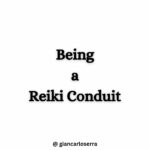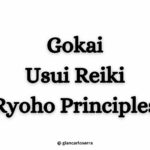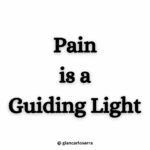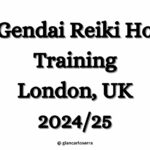
Being A Reiki Master
Being a Reiki Master is of course more than just three days training. In reality, it is the work of a lifetime, rather than just the attainment of a title. The title of being a Reiki Master is more indicative of the fact that you have now made a commitment to bring Reiki into the world and that you are ready to try and integrate Reiki into more (or all) aspects of your life.
Whilst there are obvious benefits to being a Reiki person in terms of the inherent healing abilities both for yourself and others, in some ways the real challenge is how to integrate Reiki into and how it can work in our daily lives.
Reiki is a sacred practice that requires reverence and our greatest respect if we are to experience its most wonderful value. The benefits of Reiki can be all encompassing, not only giving us the ability to heal ourselves and others, which by itself is deeply meaningful, but also bringing guidance for our lives. Its unlimited nature can create opportunities for continual growth, unfoldment, and the awakening of our own boundless potential.
The ever-increasing joy, peace and abundance that await those who sincerely pursue the path of Reiki are not only a blessing to be enjoyed, but also contain the healing that the planet so dearly needs.
One of the real values of any spiritual tradition is that it helps us to live our lives more consciously. Living life consciously is really what the choice of healing or the spiritual path is all about and it is what Usui intended when he brought forward the five precepts.
As well as the healing ability of Reiki and of course the ability to bring about change, it’s also about cultivating qualities that generate well-being, such as non-judgement, unconditional love, patience, forgiveness, surrender and probably a few more besides. What’s more, it’s about being conscious of your every action, intention, thought, feeling and emotion. It is about bridging worlds, so that you are not immersed (and thus isolated) in either the material or the magical world.
In practice, being a Reiki Master is about living by the Reiki Principles every moment of every day in your own humble way or at least trying to whenever you can, noticing when you don’t and gently trying to pull yourself back into the way you want to be when this happens. It’s not about the mystical experiences, though of course these do tend to keep coming as well.
As well as these magical, mystical moments, Reiki as a way of life is also about how you cope in the midst of a sweaty, smelly crowded train, how you are when you are driving on the motorway and everyone seems to be cutting you up, how you are when your boss snarls at you for the third time that day and how you are at three o’clock in the morning when your neighbours wake you up…again.
It’s not exclusively putting the mystical into the material or bringing the material in to the mystical…it’s about bridging and mixing the two, being able to ground the energies of Reiki into your own life, those of others around you and the world at large and living a richer life as a result.
The joys of becoming a Reiki Master are many and you don’t necessarily have to teach in order for the Master training to be useful. The additional healing energy, symbols, techniques and knowledge will add value to your healing abilities. Treating yourself, giving yourself and others healing attunements and treating others in person and at a distance will all be noticeably improved. The fact that you can pass Reiki on to friends and family is also a definite plus. Many take the Master training with just this in mind. However, if you ever decide to formally teach, you will be able to do so.
One of the greatest joys of Reiki Mastership is teaching Reiki to others. Imagine the thrill of witnessing the members of your Reiki class receiving Reiki energy during the attunement. Then, as you guide them in its use, sharing in their joy and amazement as they experience its gentle power flowing through them for the first time. As your students use Reiki to help family, friends and clients, a wonderful sense of spiritual connection will develop between all of you. Feelings of compassion and love for everyone will be strengthened as you merge with the Reiki Consciousness and know more deeply that we come from God and that we are all one in God.
The Breakfast of Masters
This appendix is not about nutritional advice, but about three qualities which two hypnosis teachers, Julie Silverthorn and John Overdurf, have found to be greatly enhanced and refined in all “enlightened masters”. The following is based on distinctions John and Julie made in their book “Dreaming Realities”.
INTENTION
Intention is the ability to focus, sharpen and maintain one’s attention and purpose over time. Like the light in a laser beam, the conscious, unconscious and higher conscious minds come into alignment, giving our intention the power to cut through fluff and obstacles.
Powerful intention arises from clear thinking. We see, hear and feel the intended results and the results of the results clearly, vividly and expect them with a sense of certainty. We know that this is what we want and the moment our intention becomes absolutely clear, we send out a “telepathic cord” into the future which actually creates the event at that point. To the extent that we maintain our intention, that event becomes inevitable.
Magic is intention applied at a key moment, and key moments are created through total alignment of all we are, do and have. When we lack such alignment, we live in tension rather than live your intention.
ENERGY
The second quality of “enlightened masters” is the amount of energy they have and are able to move through their bodies and transmit to others. A continuous awareness of energy and how we invest it at any moment, plus a sound knowledge of how to refresh and build our energy are key ingredients to living masterfully.
The connection between energy and intention is central. Intention guides the flow of our energy. Intention, starting with a thought, plus energy equals actions and creation. It is the actions we take what connects our intention with our energy and grounds them into physical reality. Intention without energy will lead nowhere. Energy without intention is likely to stray to someone else’s intentions or to merely create bouncing whirls of chaos.
All “enlightened masters” work on the principle of maximum focus and minimum effort. By having released all emotional baggage, transcended all conflicts and completed and healed their past, they have reclaimed their energy and can make it fully available to the here and now and the future.
Whenever you are about to make a decision, ask yourself “Will this option raise or lower my energy?” and let your body answer. Or in other words, “Would I choose this option out of love or out of fear?” These questions provide useful guidance.
The Ego Meter
The third key that “enlightened masters” possess is “the ego meter”. It is the state of possessing an ego instead of being possessed by it. It is the conscious relationship with your Higher Self, Spirit, Source, Rei, something greater than the ´little self´, resulting in the knowing that “I am more than I think I am”, “I am really not the one doing it anyway” and “I am a channel. It happens through me.”
How To Become A Professional Reiki Teacher
– Your professional appearance, personal hygiene and the choice and tidiness of your work space are important elements for a client to feel comfortable and respected.
– Get professional liability insurance cover whether you work from home or from a clinic and make sure that the premises confirm to health and safety standards.-
– Use the client record form provided for the initial interview of a new client as well as for follow-up treatments. Keep the forms in a safe and ideally lockable space separated from their address details.
– Confidentiality is of great importance. Never disclose anything about an identified client to a third party without that client’s permission.
– Respect privacy, dignity, religious, cultural and personal beliefs.
– Adhere to the scope of the Reiki practice. Do not offer or promise any cures. Introduce clients who are new to Reiki to the main ideas about what Reiki is and tell them that you work on the premise that all healing is self-healing – each individual creates their own unique responses to a Reiki treatment and is responsible for these effects.
– Do not give any diagnosis or any medical treatment. Send clients with conditions requiring medical diagnosis and medical treatment to see a medical doctor and invite them to come back for complementary Reiki treatments if they wish.
– Refrain from criticising the work of other practitioners in the presence of a client.
– Align your fees with what other practitioners of Reiki (or, should you be the first one other body therapies) in your area charge.
– Membership with any of the existing Reiki associations may be useful for your credibility as a practitioner, for networking and for up to date information about events and developments in the field. But choose wisely. Make sure that the association does a little more for you than just collecting your membership fee.
– Commit to continuous learning and personal and professional development.
– Refrain from using your position as a Reiki practitioner to begin a sexual relationship with a client.
– For your own security you may choose to treat previously unknown client in a clinical setting, otherwise in your home only with your partner or a flat mate around. Consider home visits carefully – the client should already be known to you and it should be safe and comfortable for you.
Usui/Holy Fire® III Reiki Master Teacher Classes (Online, London and internationally)
Holy Fire® III Reiki training is offered online, in London and internationally. This is structured in three levels (The Holy Fire® III Karuna Reiki® Master Teacher training is for Reiki Master Teachers):
– Holy Fire® III Reiki, Level 1
– Holy Fire® III Reiki, Level 2
– Holy Fire® III Reiki Master Teacher
– Holy Fire ® III Karuna Reiki® Master Teacher
The Holy Fire® III Reiki attunements in level 1 and 2 are now called placements, while the attunements in the Reiki Master are called ignitions.
In the placements and ignitions the teacher tunement, does not physically interact with the students like in the traditional Usui attunements, but guides them through a meditation for about 20/25 minutes, during which the students are attuned directly by the Holy Fire energy.
> READ MORE ABOUT Usui/Holy Fire® III Reiki Master Teacher Classes
ON-DEMAND TRAINING
Please contact me if you would like to work on a one-to-one basis, in a small group, in-person or online, or if you intend to organise a Reiki course in your city. I am willing to travel and I may be able to accommodate this
Mikao Usui and the Usui Reiki Healing Method
Extract from the work of William Lee Rand
Mikao Usui, or Usui Sensei as he was called by Reiki students, was born on August 15, 1865 in the village of Taniai in Japan. In February 1922 he went to mount Kurama yama, a sacred mountain north of Kyoto to fast and meditate for 21 days. In March 1922 and at midnight of the twenty-first day, a powerful light suddenly entered his mind through the top of his head and he felt as if he had been struck by lightning; this caused him to fall unconscious. As the sun rose, he awoke and realized that whereas before he had felt very weak and near death from his fasting, he was now filled with an extremely enjoyable state of vitality that he had never experienced before; a miraculous type of high frequency spiritual energy had displaced his normal consciousness and replaced it with an amazingly new level of awareness.
He experienced himself as being the energy and consciousness of the Universe.
He started discovering how to work with this energy and in April 1922, he moved to Tokyo and started a healing society that he named Usui Reiki Ryoho Gakkai (Usui Reiki Healing Method Society). He also opened a Reiki clinic in Harajuku, Aoyama, Tokyo. There he taught classes and gave treatments. He later developed many of his practitioner techniques such as Gassho, Byosen scanning, Reiji-ho, Gyoshi ho, Seishin-to-itsu and so forth. He also developed a formal attunement method or Reiju kai, and the Reiki symbols of which he had only three. These are the three symbols that we currently receive in Reiki level 2. He did not have a Master symbol, which was later introduced by Hawayo Takata.
He called his system of healing Shin-Shin Kai-Zen Usui Reiki Ryo-Ho (The Usui Reiki Treatment Method for Improvement of Body and Mind) or in its simplified form Usui Reiki Ryoho (Usui Reiki Healing Method).The first degree of his training was called Shoden (First Degree) and was divided into four levels: Loku-Tou, Go-Tou, Yon-Tou and San-Tou. (Note that when Takata Sensei taught this level, which in the West we refer to as Reiki Level I, she combined all four levels into one. This is most likely why she did four attunements for Level I)
The next degree was called Okuden (Inner Teaching) and had two levels: Okuden-Zen-ki (first part), and Okuden-Koe-ki (second part)
The next degree was called Shinpiden (Mystery Teaching), which is what Western Reiki calls Master level. The Shinpiden level includes, Shihan-Kaku (assistant teacher) and Shihan (venerable teacher)
Usui/Tibetan Classes are only offered in person.
> READ MORE ABOUT Usui/Tibetan Reiki Classes offered in London and internationally.
The Difference Between Reiki and Holy Fire® Reiki
What is the difference between the different courses available?
READ THIS ARTICLE to know more about the classes being offered.
Giancarlo is a fully qualified Spiritual Healer, Reiki Master, Hypnotherapist and Past Life Regression Therapist. He is a Consultant Expert Healer of the College of Psychic Studies in London.
He is a Master Teacher member of the UK Reiki Federation and registered with the Complementary & Natural Healthcare Council, Federation of Holistic Therapists, the Spiritual Regression Therapy Association and the General Hypnotherapy Register. Read more.


















